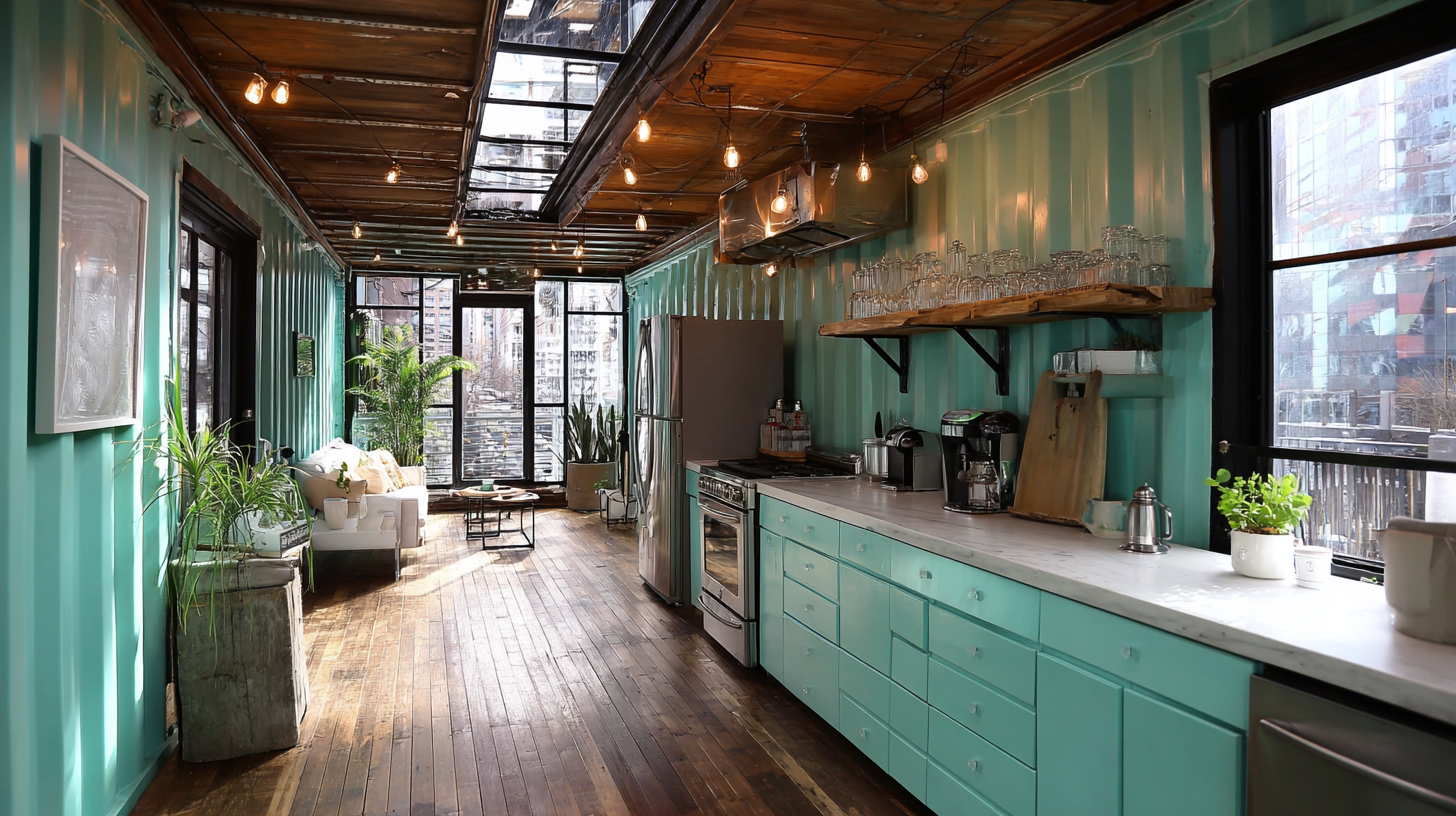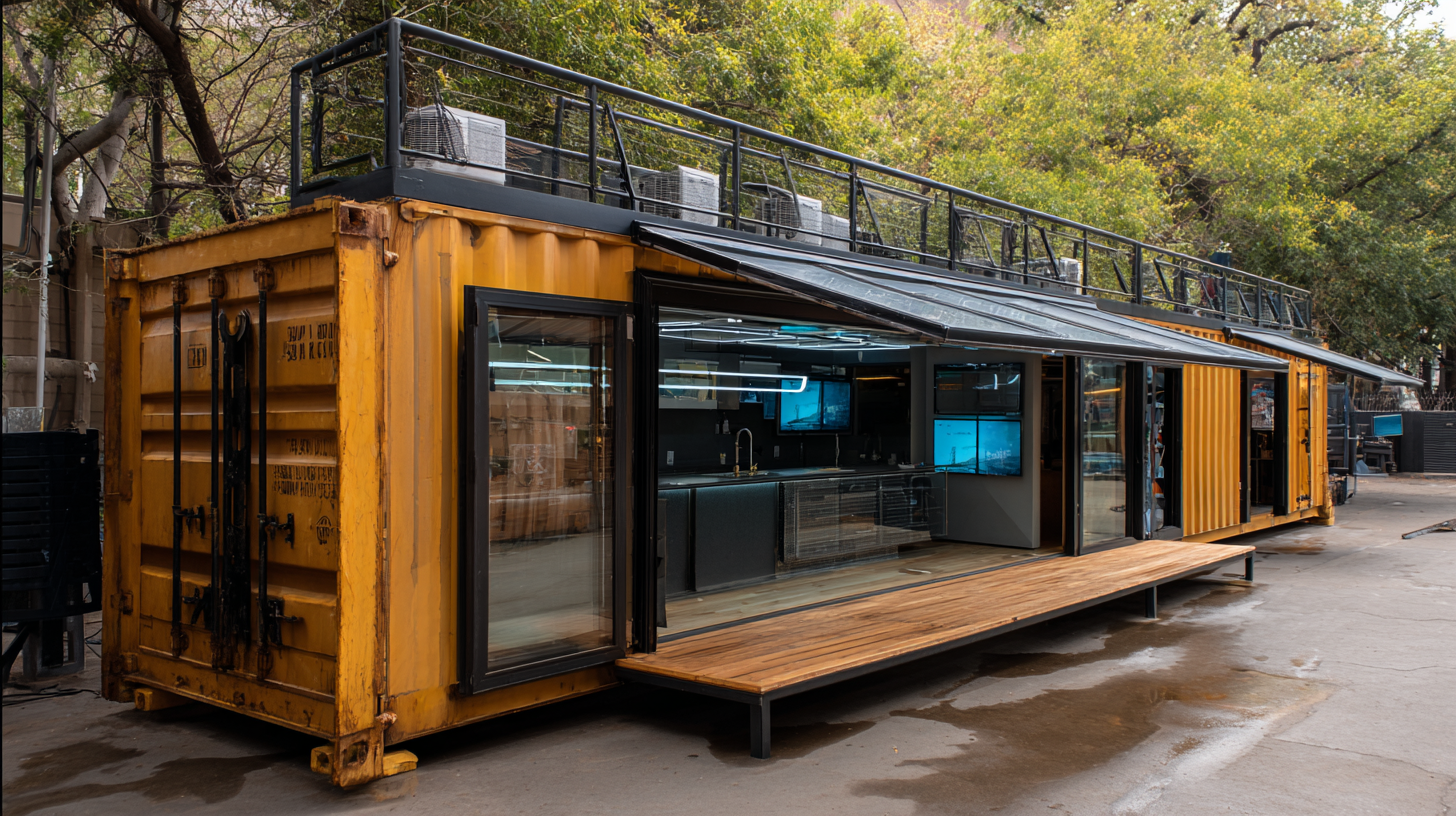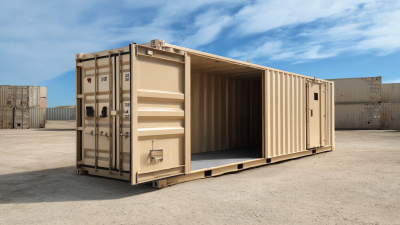Innovative Shipping Container Conversions Driving Sustainable Living Trends in Urban Areas
As urban areas continue to grapple with the challenges of overpopulation, rising housing costs, and the urgent need for sustainable living practices, innovative solutions are emerging to address these pressing issues. Among these, shipping container conversions have garnered significant attention for their versatility and environmentally friendly attributes. According to a report by the Global Sustainable Housing Foundation, the use of repurposed shipping containers can reduce construction waste by up to 90%, representing a revolutionary step forward in sustainable urban development.
Experts in the industry, such as Jennifer L. Smith, a leading authority on sustainable architecture, affirm the potential of shipping container conversions in reshaping urban lifestyles. As she aptly states, “Shipping container conversions not only provide affordable housing options but also promote a sustainable lifestyle that aligns with the values of the modern urban dweller.” This notion resonates particularly well in cities where space is at a premium and the demand for innovative living solutions is continually increasing.
By reimagining the utility of shipping containers, urban developers are paving the way for a new trend that prioritizes sustainability, affordability, and creativity. As we explore the top ten innovative shipping container conversions that are driving sustainable living trends in urban areas, we highlight the critical role they play in transforming cityscapes and enhancing quality of life for residents.

Exploring the Benefits of Shipping Container Conversions for Urban Sustainability
The trend of converting shipping containers into functional living spaces is gaining momentum in urban areas, highlighting its potential for fostering sustainability. These conversions utilize repurposed materials, significantly reducing waste and promoting eco-friendly practices. By transforming discarded containers into homes, studios, and community spaces, urban centers can address issues related to housing shortages while minimizing their environmental footprint.

In addition to their sustainable attributes, shipping container conversions often promote innovative design solutions that adapt to the unique urban landscape. They can be easily stacked or arranged in various configurations, providing flexible living options that cater to diverse community needs. Moreover, these projects often encourage local economies through job creation and affordable living spaces, making them a viable solution for urban sustainability challenges.
Through these creative endeavors, cities can embrace a more resilient future while maintaining a commitment to environmental stewardship.
Why Innovative Designs in Shipping Containers Are Transforming Urban Living Spaces
Innovative designs in shipping containers are revolutionizing urban living spaces, helping to tackle housing shortages and promote sustainability. As cities face increasing population density and rising real estate prices, shipping container conversions present a flexible and cost-effective solution. According to a report from the Urban Land Institute, container homes can be built for 20-30% less than traditional houses, making them an appealing option for many urban dwellers.

Tips: When considering a shipping container conversion, prioritize insulation and ventilation to ensure comfort in varying climates. Furthermore, explore local zoning laws and building codes to facilitate a smoother permitting process. Lastly, teaming up with experienced architects or builders can unlock more creative design solutions, maximizing both aesthetics and functionality in your new urban dwelling.
Understanding the Environmental Impact of Container Homes in City Landscapes
The rise of shipping container homes is reshaping urban landscapes, offering innovative solutions for sustainable living. According to a report by the National Association of Home Builders (NAHB), container homes can be built in approximately 30% less time than traditional houses, significantly reducing resource consumption during construction. This rapid build time not only minimizes the environmental footprint associated with traditional building methods but also helps address housing shortages in densely populated cities.
Furthermore, a study by the Urban Land Institute noted that repurposing shipping containers can lead to a reduction in waste by up to 75% when compared to conventional construction processes. Each container, often discarded after its shipping life, represents a potential home rather than waste. Integrating container homes into urban areas can help mitigate the effects of urban sprawl, promoting higher density living that reduces reliance on vehicles and lowers carbon emissions. As cities continue to evolve, the potential for shipping container conversions in promoting environmental sustainability will likely play a crucial role in shaping the future of urban living.
Innovative Shipping Container Conversions Driving Sustainable Living Trends in Urban Areas
| Aspect | Description | Environmental Impact | Urban Area Adaptability |
|---|---|---|---|
| Resource Efficiency | Use of repurposed materials minimizes waste. | Reduces landfill contribution by up to 90%. | Flexible installation in dense urban settings. |
| Energy Efficiency | Design incorporates renewable energy sources. | Can lead to energy savings of 30-60%. | Easily integrates with existing infrastructure. |
| Cost Efficiency | Lower construction costs compared to traditional homes. | Promotes affordable housing solutions. | Encourages urban regeneration projects. |
| Community Engagement | Promotes collaboration in design and use. | Fosters community resilience and relationships. | Customizable to meet local needs and challenges. |
| Sustainability | Encourages sustainable living practices. | Contributes to reduction of the urban ecological footprint. | Adapts well to changing urban environmental policies. |
Why Container Architecture Is Emerging as a Solution to Urban Housing Crises
Container architecture is gaining traction as a viable solution to urban housing crises, particularly in densely populated cities facing skyrocketing real estate prices and a shortage of affordable housing. By repurposing shipping containers, architects and builders can create innovative living spaces that are not only cost-effective but also environmentally sustainable. This approach significantly reduces the carbon footprint associated with traditional construction methods, as it utilizes materials that would otherwise contribute to waste in already overcrowded landfills.
Moreover, container conversions allow for rapid deployment of housing, addressing immediate needs for shelter in urban environments. These modular units can be stacked, arranged, or customized to fit diverse community needs, offering flexibility in design that traditional homes cannot match. This adaptability makes container homes an ideal choice for temporary housing solutions, social housing projects, or even permanent residences in urban centers grappling with housing shortages. As cities continue to evolve, the integration of container architecture into urban planning offers a promising path toward addressing housing dilemmas while promoting sustainable living practices.
Innovative Shipping Container Conversions Driving Sustainable Living Trends in Urban Areas
This chart illustrates the growing trend of shipping container conversions in urban settings, focusing on the number of projects initiated from 2018 to 2023. The data reflects the increasing interest in sustainable living solutions amidst housing crises.
Evaluating the Economic Advantages of Shipping Container Developments in Urban Areas
The emergence of innovative shipping container conversions is revolutionizing urban living, offering economic advantages that appeal to both investors and residents alike. According to a report by Freedonia Group, the U.S. shipping container homes market is projected to grow at a compound annual growth rate (CAGR) of 7.5% through 2025. This growth is largely attributed to the reduction in construction costs; converting a shipping container into a livable space can be significantly cheaper—by as much as 30-50%—when compared to traditional building methods.
Additionally, these conversions are more sustainable and have a lower ecological footprint. The Urban Land Institute states that repurposing shipping containers not only reduces waste but also minimizes resource consumption during the building phase. With an average container costing around $2,000 to $5,000, the overall development cost remains economically favorable. Consequently, urban developers and local governments are increasingly considering shipping container projects as a viable solution to address housing shortages while promoting environmentally friendly practices, merging both sustainability and economic viability in urban settings.
Related Posts
-

Exploring Innovative Uses for Cargo Shipping Containers in Sustainable Living
-

Maximize Your Space with 20ft Storage Containers for Efficient Organization and Cost Savings
-

Revolutionizing Food Storage with Shipping Container Freezers for Sustainable Business Solutions
-

Maximizing Freshness: Innovative Uses for Refrigerated Containers in the Food Industry
-

Revolutionizing Shipping: The Future of Refrigerated Containers in Cold Chain Logistics
-

Unlocking the Secrets of Cargo Shipping Containers: A Complete Guide to Their Uses and Benefits
Get a quote
Get a quote
Read More
Accept AllReject AllCustomise
Privacy Overview
| Cookie | Duration | Description |
|---|---|---|
| cookielawinfo-checkbox-advertisement | 1 year | Set by the GDPR Cookie Consent plugin, this cookie records the user consent for the cookies in the "Advertisement" category. |
| cookielawinfo-checkbox-analytics | 11 months | This cookie is set by GDPR Cookie Consent plugin. The cookie is used to store the user consent for the cookies in the category "Analytics". |
| cookielawinfo-checkbox-functional | 11 months | The cookie is set by GDPR cookie consent to record the user consent for the cookies in the category "Functional". |
| cookielawinfo-checkbox-necessary | 11 months | This cookie is set by GDPR Cookie Consent plugin. The cookies is used to store the user consent for the cookies in the category "Necessary". |
| cookielawinfo-checkbox-others | 11 months | This cookie is set by GDPR Cookie Consent plugin. The cookie is used to store the user consent for the cookies in the category "Other. |
| cookielawinfo-checkbox-performance | 11 months | This cookie is set by GDPR Cookie Consent plugin. The cookie is used to store the user consent for the cookies in the category "Performance". |
| CookieLawInfoConsent | 1 year | CookieYes sets this cookie to record the default button state of the corresponding category and the status of CCPA. It works only in coordination with the primary cookie. |
| viewed_cookie_policy | 11 months | The cookie is set by the GDPR Cookie Consent plugin and is used to store whether or not user has consented to the use of cookies. It does not store any personal data. |
| Cookie | Duration | Description |
|---|---|---|
| _cs_c | 1 year 1 month | The cookie is used by Content Square to save the user consent to be tracked. |
| Cookie | Duration | Description |
|---|---|---|
| _cs_id | 1 year 17 days 20 hours 13 minutes | This cookie is used to store the ContentSquare's user identifier ID. This is a persistent cookie and expires after 13 months. |
| _cs_s | 1 hour | This cookie is used to store the number of page's viewed by a visitor within the session for ContentSquare's solution. |
| _ga | 1 year 1 month 4 days | Google Analytics sets this cookie to calculate visitor, session and campaign data and track site usage for the site's analytics report. The cookie stores information anonymously and assigns a randomly generated number to recognise unique visitors. |
| _ga_* | 1 year 1 month 4 days | Google Analytics sets this cookie to store and count page views. |
| _gcl_au | 3 months | Google Tag Manager sets the cookie to experiment advertisement efficiency of websites using their services. |
| Cookie | Duration | Description |
|---|---|---|
| test_cookie | 15 minutes | doubleclick.net sets this cookie to determine if the user's browser supports cookies. |
| Cookie | Duration | Description |
|---|---|---|
| _cs_root-domain | session | Description is currently not available. |
| _cs_same_site | session | Description is currently not available. |